A world of its own
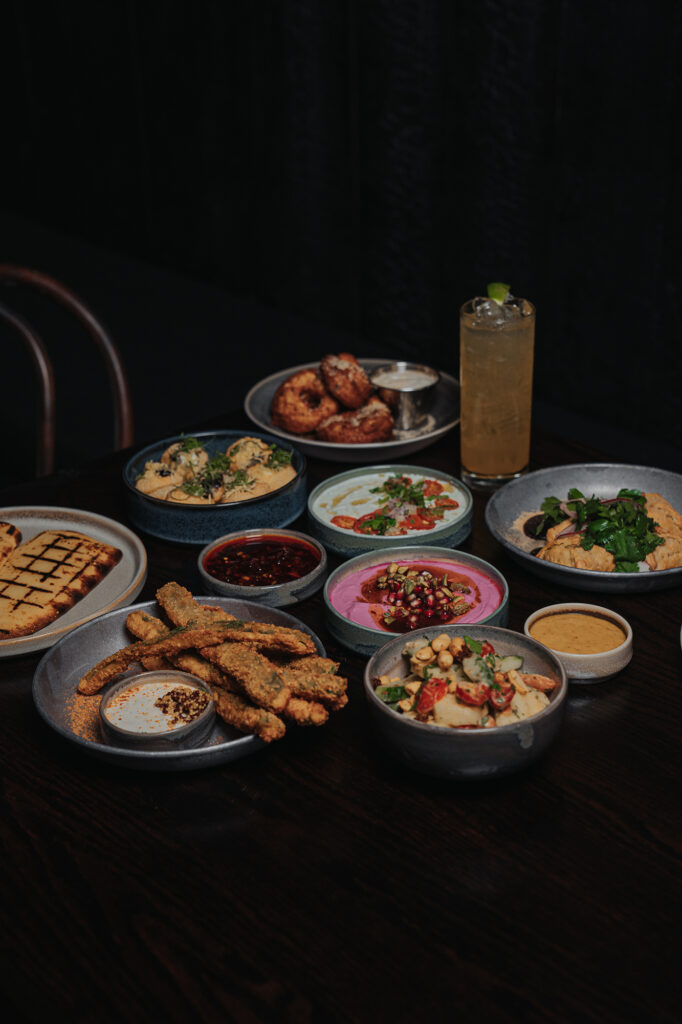
By Carlo Wolff
The chiaroscuro environment that is Amba is chef Douglas Katz’s latest showcase for creative cuisine. Located in the rapidly evolving Hingetown area of Ohio City, Amba is the second of two restaurants Katz has currently open, following the COVID-driven demise of fire food & drink in Cleveland’s Shaker Square. The Hindu-inspired Amba aims to give the gastronomically adventurous a communal, inspiring experience.
Enter Amba from West 28th Street, follow the lamp to the hostess stand, and a unique restaurant slowly emerges. It’s a beauty, with long, low concrete tables, skinny, monastic windows, a rope ceiling for a Polynesian touch, sconces designed to evoke the building’s former incarnation and sculptural wall accents. A sleek steel bar designed by Shred and Co. of Cleveland first catches the eye. Shred and Co. also charred Amba’s walls, giving them unusual depth.
Years ago, the space was occupied by Schaefer Printing Company. A big Kelsey hand press, its two steel plates coming together to print, was at the heart of what is now an ultramodern restaurant. Circular wall sconces, illuminated to exude a subtle nimbus, are Amba designer Kelley Shaffer’s homage to the building’s industrial past.
Named after a condiment based in pickled mango, Amba is two spaces, each with its own entrance: the restaurant, which can accommodate 80, and Bar Amba, a cocktail incubator with room for 40. It occupies two-thirds of a single-story art deco building on West 28th Street between Detroit Avenue and Church Street.
“The space is all about light and shadows, so if you look at all of the detail, it’s all about using light in different ways,” Katz says, citing the restaurant’s dramatic window treatments and sculptural touches. “Depending on the light outside, you’re not sure if you’re looking at something that has depth or doesn’t have depth.”
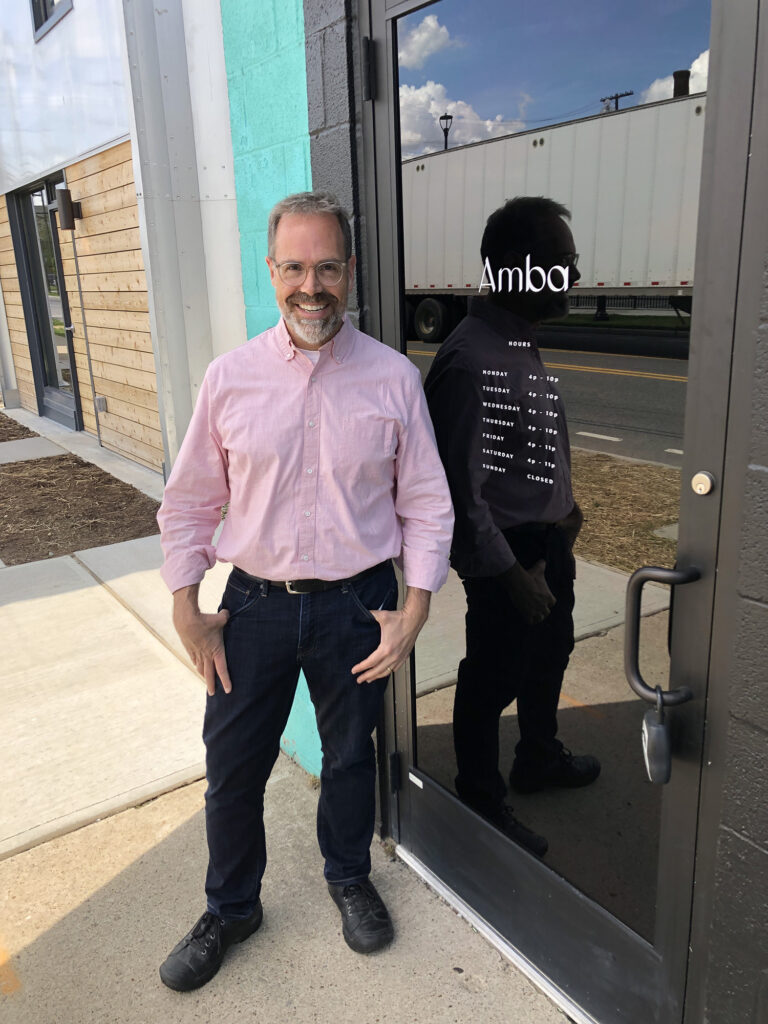
A rope ceiling adds to the earthy ambiance, and 24 speakers above the rope “will add some really exciting music to the space,” Katz says in an interview a few weeks before Amba’s May 24 opening. Small, battery-operated table lamps – an ingenious feature that addresses Amba’s communal intent – can be moved around the table for easier menu reading.
Amba is “very world-focused and very locally inspired,” Katz says. “It’s not a place that you can really say is anywhere, and that was on purpose because we are creating a food experience that is a fusion of flavors. It is inspired by India, but it is definitely our take on these flavors using ingredients you can get here. It’s not meant to be this traditional Indian experience.”
The judiciously lit Bar Amba, which Katz calls “our drink lab,” is even more intimate. Master mixologist Noah Biddle, like Amba chef Cameron Pishnery a Katz veteran, thinks Porcelain & Pine, a clarified milk punch involving “liquor infused with a variety of spices,” will be a big seller. Different kinds of cocktails will be served at Amba’s two bars, which Biddle oversees.
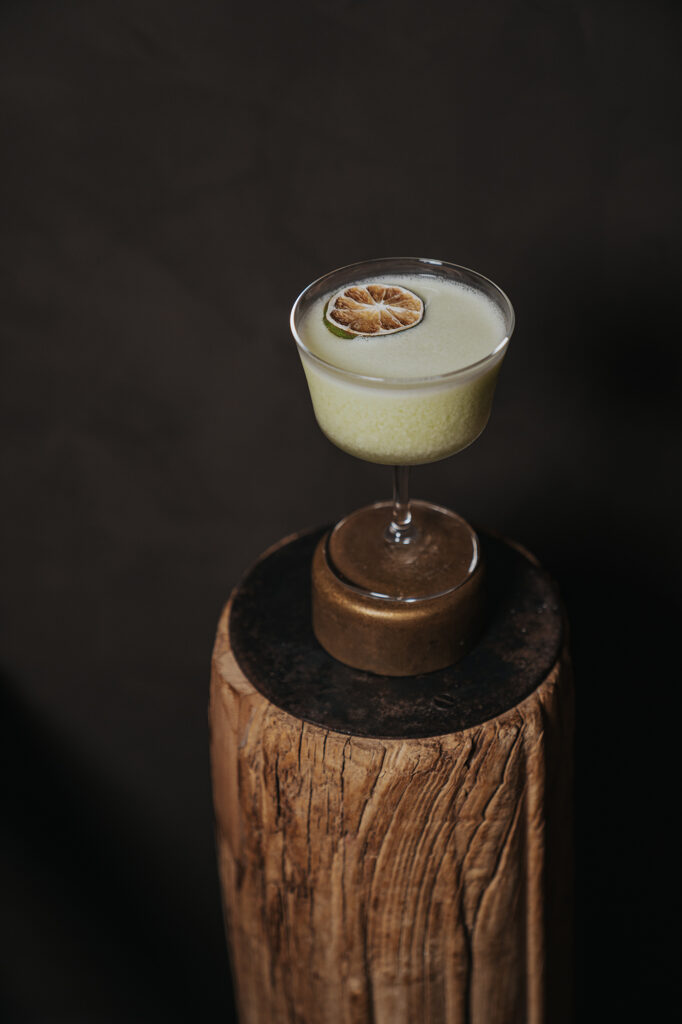
Amba began as a ghost kitchen, as did Katz’s South America-inspired Chimi. Currently dormant, he hopes to find a brick-and-mortar home for Chimi in 2023. Zhug, Katz’s Middle Eastern-style restaurant in Cleveland Heights’ Cedar-Fairmount neighborhood, opened in November 2019, shifted to takeout only during the pandemic and is now back as a popular in-person dining spot.
The idea behind ghost kitchens was “research and development for the restaurants we wanted to create after the pandemic,” Katz says. But it was never his intent to be a ghost-kitchen chef.
Katz also is chef-partner at Provenance at the Cleveland Museum of Art. Provenance has yet to reopen since the pandemic. His empire has shrunk, “but we’re going to regrow,” he says. Amba, his latest laboratory, is quite a growth spurt.
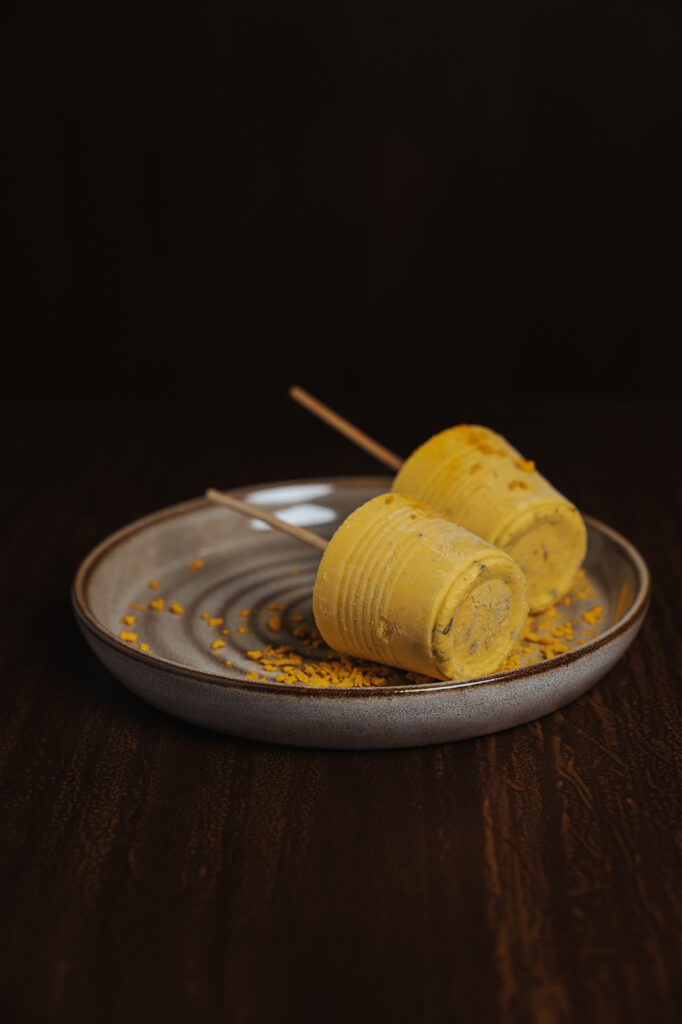
Cooking with Katz
A “white Jewish kid from Shaker Heights,” Katz says he has known he wanted to be a chef since he was 7 years old.
“I loved eating,” he says. “I was very chubby, and I’ve been chubby my whole life; I finally got it under control in the last five years.”
The way Katz grows as a chef is by using new ingredients and challenging himself to learn new food culture. He put a cheese plate on the fire menu to learn about cheese, he toasted and ground spices to find out about spices, and he makes dishes with unfamiliar ingredients to see how they come together.
“My education is about exploring cultures, so over the last 10 years I’ve been lucky to be able to do that” he says, through his ventures where he “learned what was selling.”
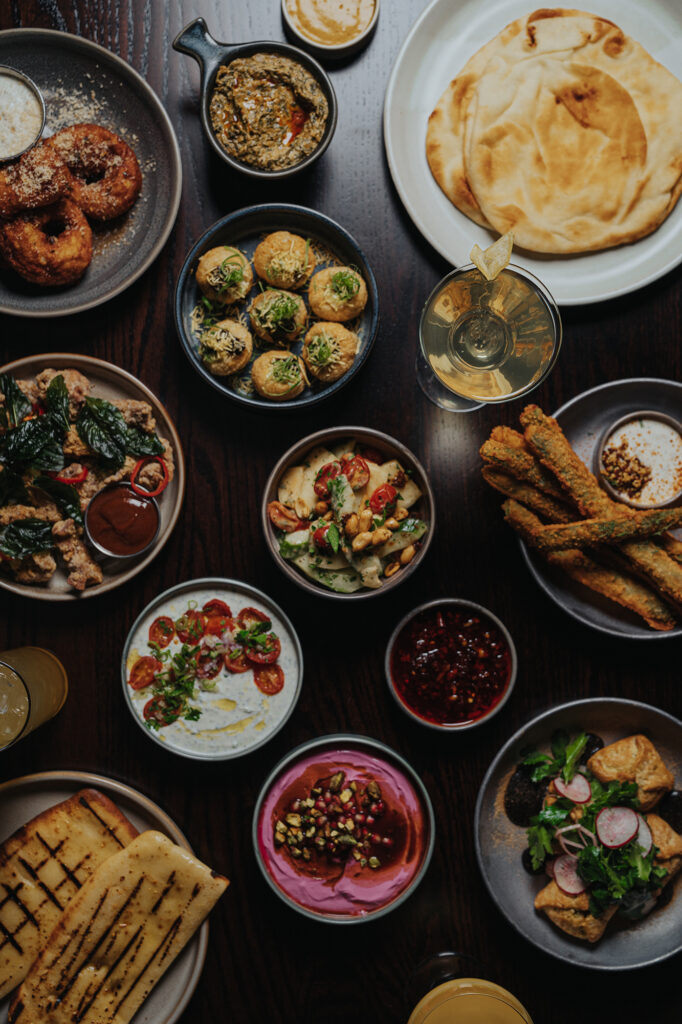
He also absorbs through travel. He spent time in northern India about seven years ago, and for years worked with Radhika Rajwade, who cooked Indian dinners with him at fire. Rajwade, he says, sparked his Fire Spice Company and Chutney B, his short-lived rice bowl concept at the Van Aken District’s Market Hall in Shaker Heights.
Amba is Indian, though “not in any way traditional Indian,” Katz says. Amba’s menu was set up so service staff can guide diners to the right blend of dishes. “If it sounds good to you, you should order it” is another guidepost. It also has suggested menus, by size and component. “Our servers are our guides, and the idea is you’re exploring food,” Katz says.
Like Zhug, Amba doesn’t take reservations. Like Zhug, Amba encourages sharing – it’s a menu of “shareable plates.” But Katz calls Amba “more transportive, from the outside to the inside.” In addition, its servers are happy to suggest pairings from a menu offering numerous vegan, vegetarian and gluten-free dishes, some seafood, chicken and a venison curry.
An Amba meal is not about a first course, a second course and dessert.
“It’s about ordering several dishes and, much like you would at a Chinese restaurant, eating them together,” Katz says. The bigger the group, the more dishes to try and the more experiences to share. Those menu experiences, developed by chef Pishnery, are likely quite a bit different.
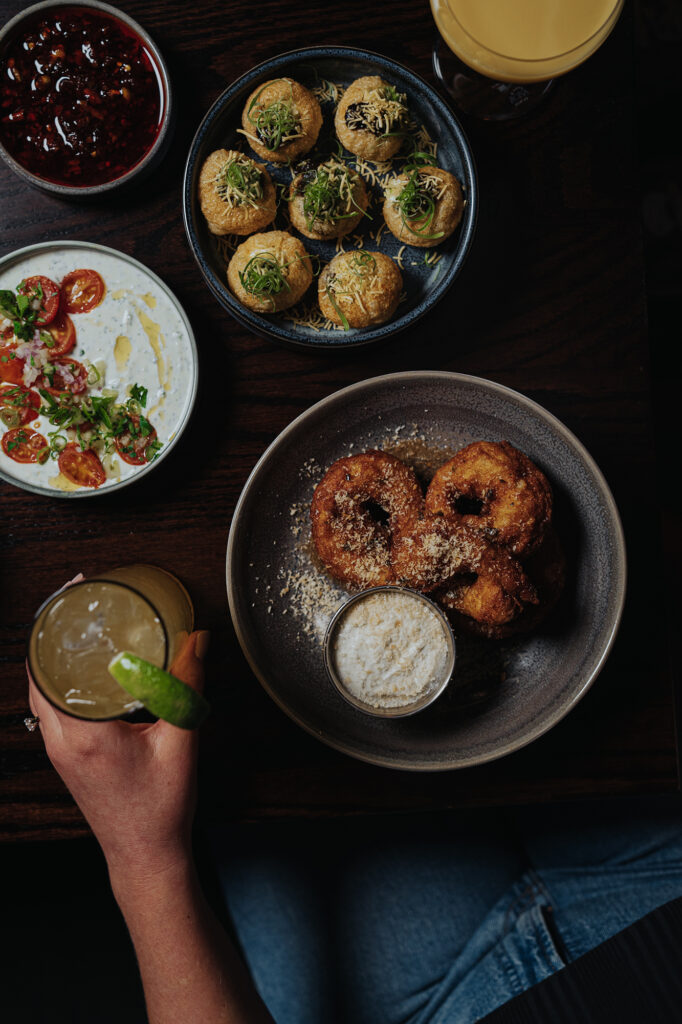
Hingetown calling
Curiosity drives Katz – and not just in regard to food. He chooses neighborhoods for his restaurants, hanging out in them for years before he commits.
The longtime Cleveland Heights resident, whose family attends both Park Synagogue in Pepper Pike and Cleveland Heights and The Temple-Tifereth Israel in Beachwood, has had his eye on Hingetown since before it was known by that name.
After sampling local attractions like Rising Star Coffee, Jeremy Umansky’s Larder Delicatessen and Bakery, Cleveland Tea Revival and Transformer Station art museum over several years, Katz and business partner Todd Thompson decided they wanted to join the Hingetown conversation.
Katz says he is happy to help animate West 28th, a street slightly off the beaten track. He notes the “beautiful hangar buildings,” futuristic Quonset huts next to Amba, and predicts that “this street will really activate.”
Graham Veysey, a developer involved in several Hingetown ventures, showed Katz the old printing press site.
“It was a raw space, but I love that,” Katz says. “It was just so hidden from the street, but when I saw the tiger mural … I was looking for an Indian restaurant, and tigers in India are very popular.”
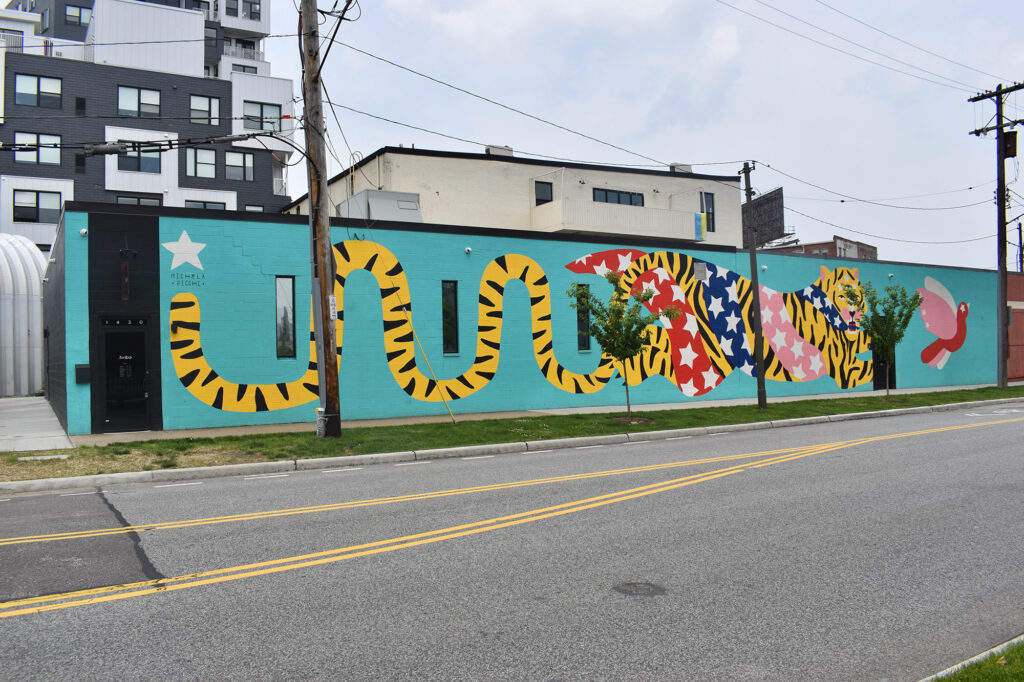
That vivid mural, which Michela Picchi painted in 2016, stretches the West 28th Street length of the building. It was a very loud sign that Katz had found the right place for Amba.
Katz is impressed by what Veysey, now his landlord, accomplished with Church + State, a two-building apartment complex Veysey, his wife, the architect Marika Shioiri-Clark, and their partner Michael Panzica developed on West 29th Street next to Amba. Katz calls Veysey and Shioiri-Clark “the most creative couple I’ve ever met.”
Talk about birds of a feather.

Katz’s Amba favorites
• Paneer cheese (made locally)
• Fried zucchini
• Warm cashews
• Pilau basmati rice
• Spicy sloppy joe keema
• Wok fried string beans
• Kulfi
